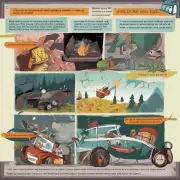How can you identify the type of sentence a sentence is?
畅红霞
当生活给你一百个理由哭泣时,真的别沮丧,你就拿出一千个理由笑给它看。
Sure, here are some ways to identify the type of sentence a sentence is:
1. Subject and Verb:
- Simple sentence: Subject (e.g., John) + Verb (e.g., ran)
- Compound sentence: Subject + Verb + Object (e.g., John ran to the store)
- Complex sentence: Subject + Verb + Object + Adjective/Adverb (e.g., John ran quickly to the store)
2. Clauses:
- Independent clause: Contains a subject and a predicate (e.g., John ran to the store).
- Dependent clause: Contains a subject that is not the main subject of the sentence (e.g., the store).
3. Sentence Structure:
- Simple sentence: One independent clause (e.g., John ran to the store).
- Compound sentence: Two or more independent clauses joined by a conjunction (e.g., John ran to the store, then he went home).
- Complex sentence: Three or more independent clauses joined by a conjunction and a dependent clause (e.g., John ran to the store, then he went home, where he ate dinner).
4. Tense:
- Simple sentence: Uses simple tense (e.g., John ran).
- Compound sentence: Uses different tenses for different clauses (e.g., John ran to the store while he was on his way home).
- Complex sentence: Uses different tenses for different clauses and a dependent clause (e.g., John ran to the store while he was on his way home, where he ate dinner).
5. Mood:
- Simple sentence: Expresses a state of being (e.g., John is running).
- Compound sentence: Expresses a cause and effect (e.g., John ran to the store because he was tired).
- Complex sentence: Expresses a condition (e.g., if John ran to the store, he would have arrived on time).
By understanding these different types of sentences, you can better analyze and interpret them.





